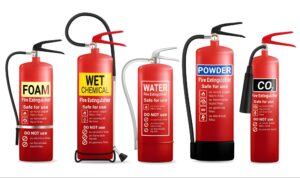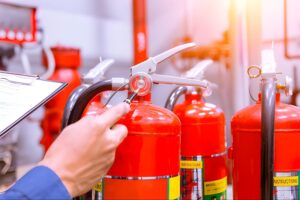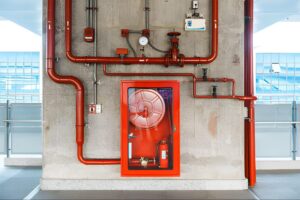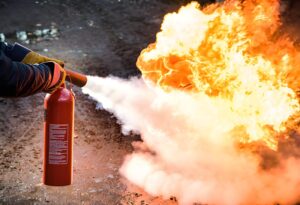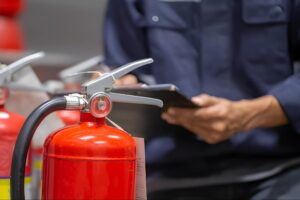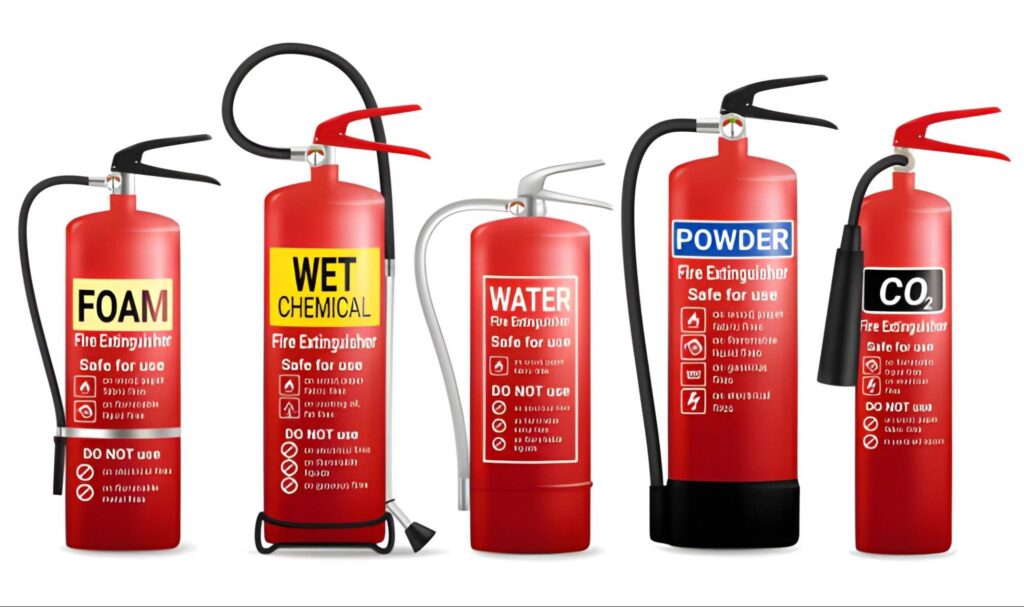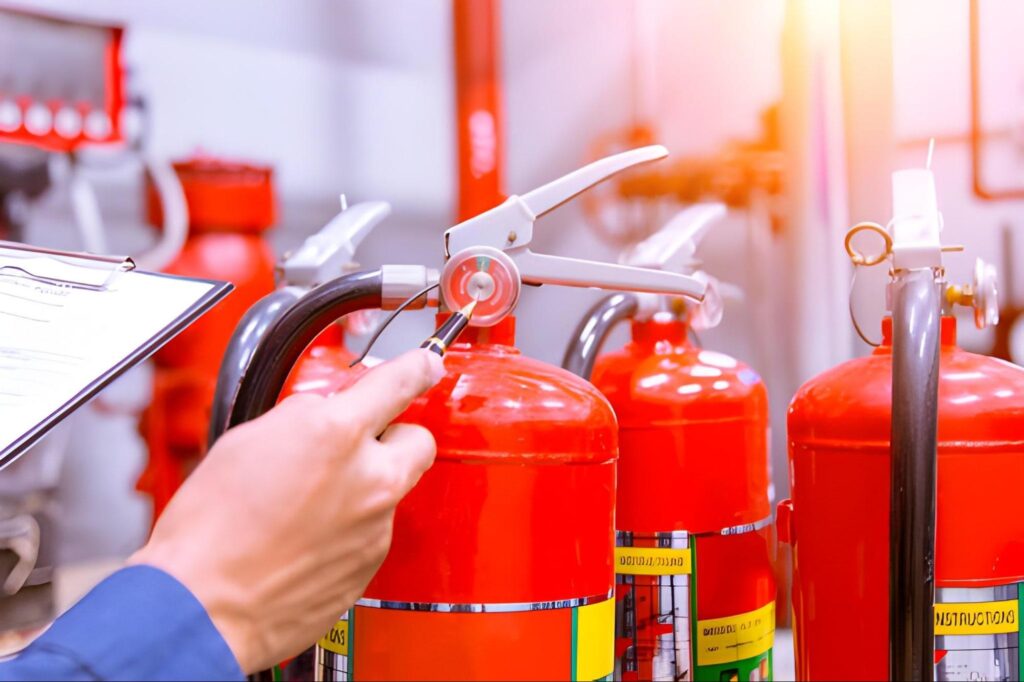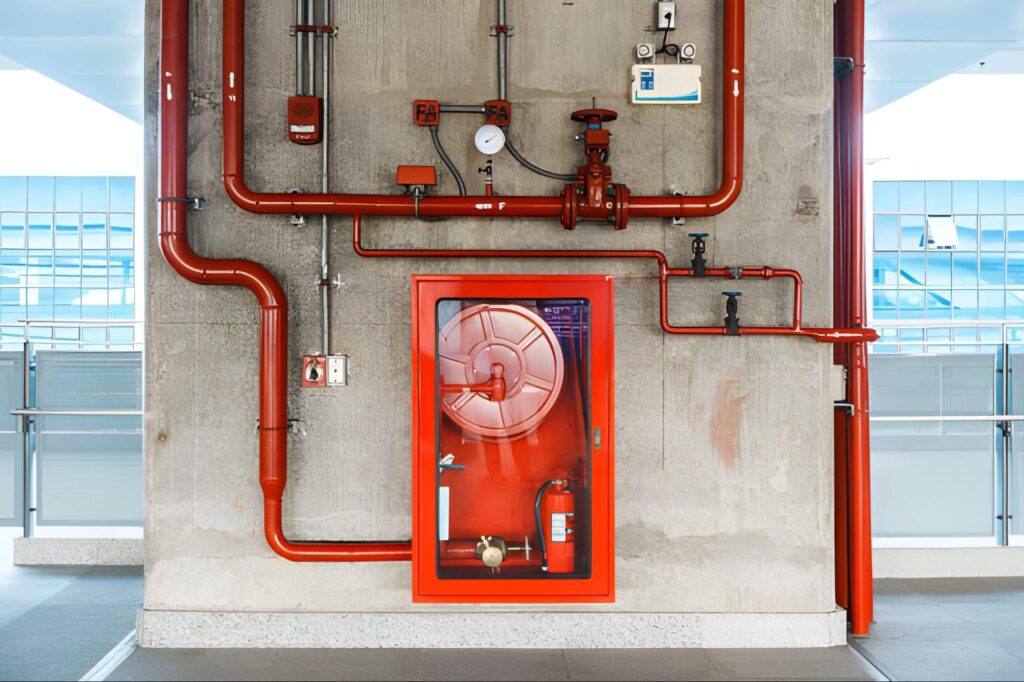Ensuring fire safety in the workplace begins with conducting a thorough fire risk assessment, which is both a legal requirement and a fundamental step toward protecting lives and property.
In Singapore, employers and building owners are primarily responsible for ensuring these assessments are properly completed. However, employees also share an essential part in maintaining overall fire safety. They are expected to participate in fire safety training, promptly report any potential hazards, stay informed about evacuation routes, and refrain from misusing fire safety equipment.
The Legal Framework on Fire Safety Responsibility
Learning about the fire safety responsibilities and the legal framework helps ensure compliance and a safer environment for all occupants.
- Building or Property Owners: Commercial building owners are legally obligated to provide the foundation for fire safety. This includes installing and maintaining essential fire safety equipment, ensuring that fire escape routes are clear and accessible, obtaining the required Fire Safety Certificate from SCDF and maintaining the Fire Safety Report.
The report documents fire protection measures, life safety features, and fire safety management, serving as a reference for FSMs, SCDF, and Qualified Persons (QPs). Owners are responsible for its custody and ensuring it is updated when additions or alterations require revisions.
- Employers and Occupants: While owners provide the infrastructure, the day-to-day maintenance of fire safety falls on occupants, led by employers. This responsibility encompasses maintaining equipment in good working order, conducting regular fire drills, and educating employees on fire safety procedures.
- Fire Safety Managers (FSMs): In larger commercial buildings, FSMs are appointed to oversee and manage fire safety measures. Their duties include carrying out fire risk assessments, ensuring compliance with fire safety regulations, and coordinating drills, which ensures that staff and premises remain prepared for emergencies.
- Government Office: The Singapore Civil Defence Force (SCDF), under the Ministry of Home Affairs, enforces fire safety regulations. They conduct inspections, provide training programs, set guidelines, and oversee emergency response services, including firefighting, rescue, and medical support.
Appointing a Fire Safety Manager (FSM)
The FSM is the responsible person for all fire safety matters, bridging the gap between regulatory requirements and day-to-day safety practices.
Key Roles and Responsibilities of an FSM
- Regular inspection of fire safety equipment: Ensures extinguishers, sprinklers, alarms, and other systems are fully operational.
- Staying updated on fire safety regulations: Keeps the organization compliant with the latest laws and best practices.
- Conducting fire safety awareness sessions: Educates employees on fire prevention, evacuation, and proper equipment usage.
- Developing and implementing fire safety plans: Designs strategies including evacuation routes and emergency procedures.
- Coordinating with stakeholders: Maintains communication with owners, employers, SCDF, and other relevant parties to ensure a cohesive approach to fire safety management.
Qualities to Look for in an FSM
Selecting the right candidate as FSM is crucial, as this person will be primarily responsible for overseeing all fire safety measures.
- Strong communication and interpersonal skills to convey fire safety protocols effectively.
- Keen attention to detail for identifying potential hazards and ensuring equipment reliability.
- Solid knowledge of fire safety regulations and practical applications.
- Ability to work independently while collaborating with teams when necessary.
- Physical fitness and mental resilience to handle emergencies efficiently.
Fire Safety in the Workplace
A comprehensive approach to fire safety involves:
Training and Awareness
Fire safety training is essential for preparing employees to respond effectively in emergencies.
- Courses designed to educate staff on potential fire hazards, prevention strategies, and emergency response procedures equip them with the knowledge needed to minimize risks.
- Regular fire drills complement this training, allowing occupants to familiarize themselves with evacuation routes, practice safe exits, and understand their responsibilities during a fire.
Equipment Maintenance
Maintaining fire safety equipment is crucial for ensuring workplace safety. This includes:
- Periodic inspections: This ensures that fire extinguishers, alarms, sprinklers, and other safety systems are fully functional and comply with current fire safety codes.
- Upgrades or replacements: They are necessary whenever equipment becomes outdated or fails to meet regulatory standards, ensuring that the workplace is always protected and compliant.
- Consistent monitoring and maintenance: This reduces the likelihood of equipment failure during emergencies.
Partnering with Professionals
Collaborating with experienced fire protection companies offers significant advantages for businesses. Professional engineers, such as those at Soteria, conduct thorough assessments and provide customized fire safety solutions tailored to specific building types and workplace needs. This approach ensures that fire protection systems are compliant, reliable, and effective, while also addressing identified risks and supporting employee safety and organizational preparedness.
Consequences of Neglecting Fire Risk Assessments
Neglecting fire risk assessments can have serious legal, financial, and safety implications for any organization.
- Legal penalties: Non-compliance with SCDF regulations can result in fines, penalties, or even legal action, exposing businesses to significant reputational and financial risks.
- Increased risk of accidents: Without proper risk assessments, the likelihood of fire-related accidents, injuries, or fatalities rises, putting employees and visitors in danger.
- Property damage and financial losses: Fires that could have been prevented or mitigated may lead to extensive property damage and substantial financial losses.
- Reduced employee confidence: A workplace that neglects fire safety can erode employee trust and confidence, negatively impacting morale and overall safety culture.
Strengthening Workplace Safety with Soteria’s Expert Fire Safety Services
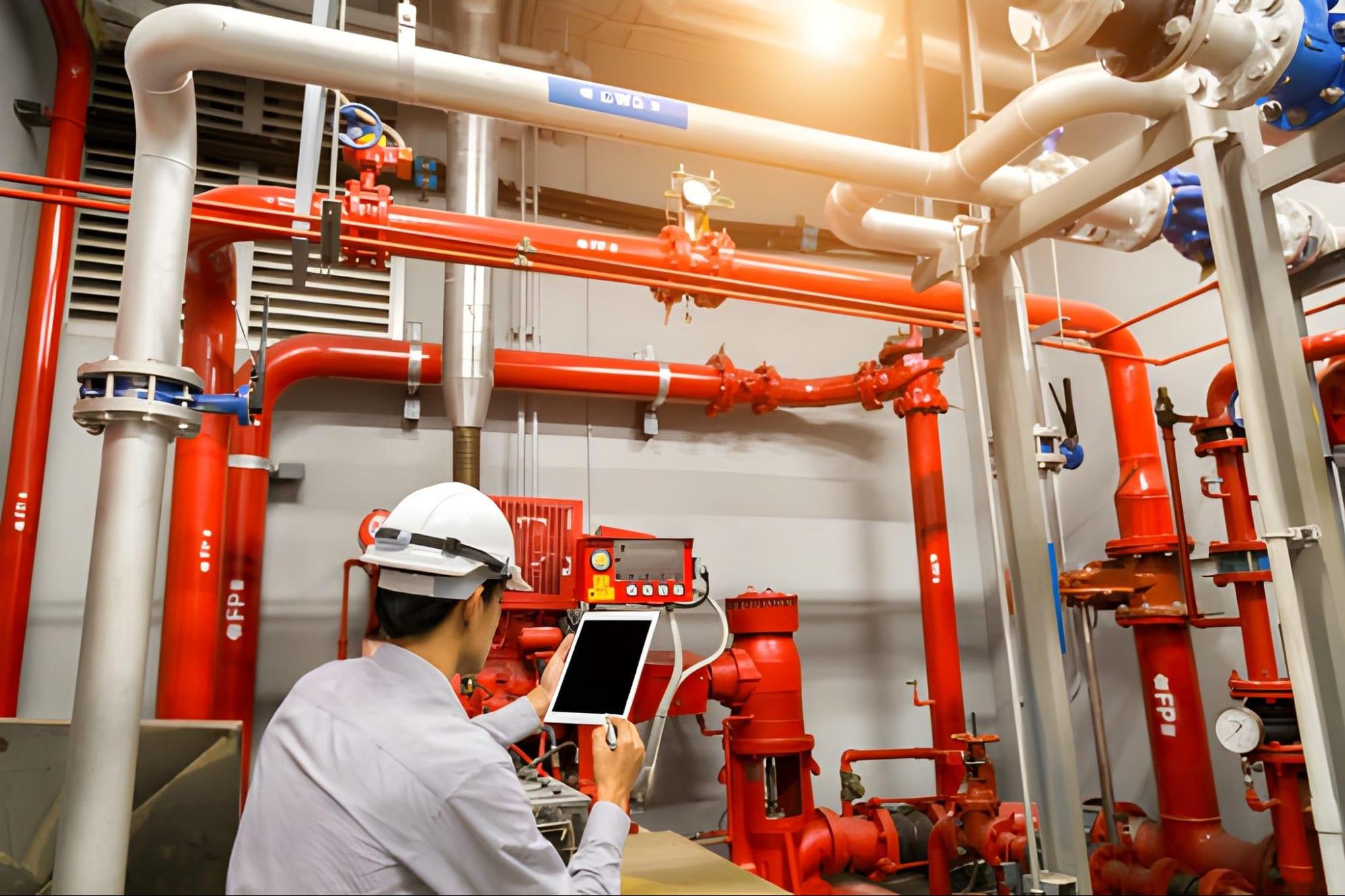
Properly conducted fire risk assessments safeguard lives, protect property, and minimize legal and financial risks, making them an essential part of any workplace safety strategy.
To achieve this effectively, businesses can partner with experts like Soteria for complete Fire Code compliance in Singapore. Our professional engineers simplify the path to compliance through comprehensive audits. This ensures that buildings, whether undergoing upgrades, redevelopment, or regular operations, meet the latest SCDF Fire Code effortlessly.
Additionally, we assist in obtaining Fire Safety Certificates for commercial buildings, providing comprehensive support to ensure your premises remain fully compliant and secure.
Take the next step in protecting your workplace by contacting Soteria today for expert fire safety compliance and auditing services.
